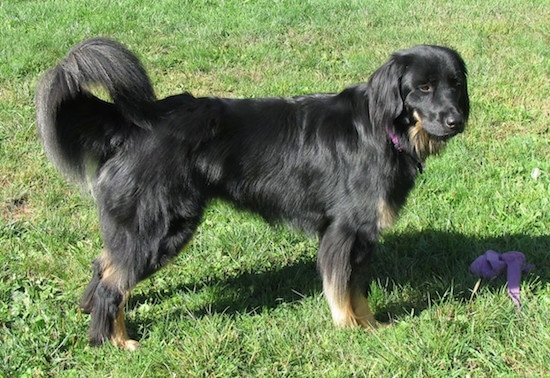
"Lucy is now 3 years old. She is a wonderful companion. Lucy remains protective, but is also social and fun."
The Hovawart looks somewhat like a Golden Retriever. The head is powerful with a broad, rounded forehead. The skull is about the same length as the muzzle, with a well-defined stop. The nose is black with well-developed nostrils. The teeth meet in a scissors or level bite. The dark to medium brown eyes are oval in shape. The triangular drop ears are set high and wide apart. The front legs are straight. The feet are round, compact and strong, with well-arched, tight toes. Dewclaws may be removed. The long-haired, dense coat is slightly wavy, lying flat. There are longer hairs on the chest, belly, back of the legs, and the underside of the tail. Coat colors come in black and gold, black or blond.
The Hovawart has a strong, deep-throated bark. This breed will be calm inside the house provided it receives enough daily exercise. It is determined, obedient and affectionate, especially toward its master. Loyal to the family. Excellent with children when well-socialized, well exercised and see humans as alpha. They are highly devoted and have a strong sense of territory and will not generally wander far away. Remaining playful and puppy-like in its old age, the Hovawart is reserved with strangers but is a pleasant family dog. Good natured and even-tempered. This brave dog is protective, alert and a good watchdog. It will protect your property against intruders with great passion. When its handler indicates that visitors are welcome, it will accept them immediately. The Hovawart has a good scenting nose. It is intelligent and can be trained to a high degree, learning quickly what you expect of it. The best results are achieved with extremely consistent, loving and well-balanced training. Unneutered males can be very challenging to handle. The Hovawart is a dominant breed, that requires a firm, experienced owner. If owners are not there to communicate their leadership the Hovawart may be aggressive with other dogs but it does well with non-canine petsin the household if well socialized. If owners do not treat their Hovawarts in such a way that their canine instincts are fulfilled with the proper leadership and release of physical and mental energy, it can cause them to start fear biting, or be rather timid. Hovawarts are ideally suited for tracking, avalanche rescue, as watchdogs and for defense situations.
Height: 23 - 28 inches (58 - 70 cm)
Weight: 55 - 90 pounds (25 - 51 kg)
This is a very healthy breed. However, an underactive thyroid is widespread in European lines. Hip dysplasia sometimes occurs.
Hovawarts are not recommended for apartment life. They are moderately active indoors and will do best with at least an average-sized yard. They prefer cool climates and can sleep outdoors. They are outstanding watchdogs, especially for stables, fields and country houses.
The Hovawart needs to be taken on a daily walk, jog or run. While out on the walk make sure the dog heels beside or behind the person holding the lead, never in front, as instinct tells a dog the leader leads the way, and that leader needs to be the human. Regular long walks, hikes, and chances to run and play off the lead will be greatly enjoyed and will keep them healthy. Run easily over difficult terrain.
About 10-14 years.
About 6 to 8 puppies
The Hovawart's coat is easy to groom. An occasional brushing and combing, taking extra care in the places where tangles might form, is all this breed needs. It is an average shedder.
The Hovawart originates from Germany. It is a very old working breed descended from the Newfoundland, Leonberger, and possibly the Hungarian Kuvasz. The goal of its developers was to re-create the great estate guarding dog of the Middle Ages. The Hovawart is rare in the USA, but popular in Germany. Eike von Repgow wrote about the "Hofewart" as an estate guard dog in the Sachsenspiegel. They were also illustrated in writings in the 1400's tracking bandits. The breed almost became extinct in the 1200s, however by the 1920s a breeder by the name of Kurt Konig worked on a program reconstructing the breed. His efforts were successful and the breed was recognized by the German Kennel Club in 1937. Some of the Hovawart’s talents are watchdog, Schutzhund, search and rescue and tracking.
Herding
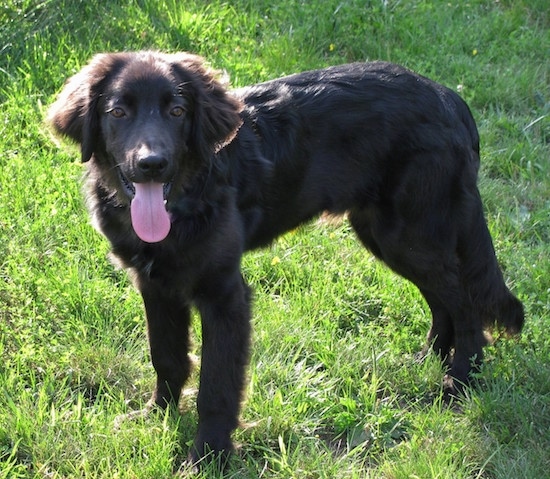
"Along with Lucy, Leo is now part of our family. At 9 months old he is very sweet and sensitive. He is already a great watchdog but is friendly once he sees we accept someone. Leo gets along great with Lucy as well as our 5 year old cat Bella."
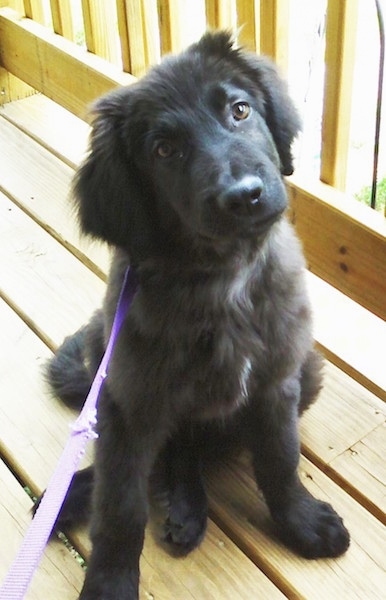
Leo the Hovawart as a puppy at 4 months old
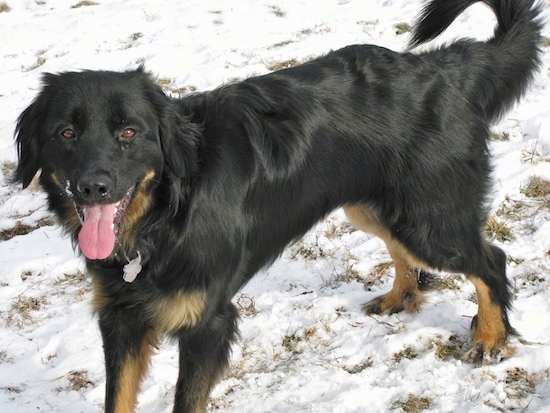
"Lucy is now 2.5 years old and has developed beautifully. She is sweet, playful and devoted but also watchful and protective. Hovawarts require a lot of patience and ongoing training. They respond well to praise and rewards along with a firm yet gentle manner. Lucy is 26" tall and 74lbs.."
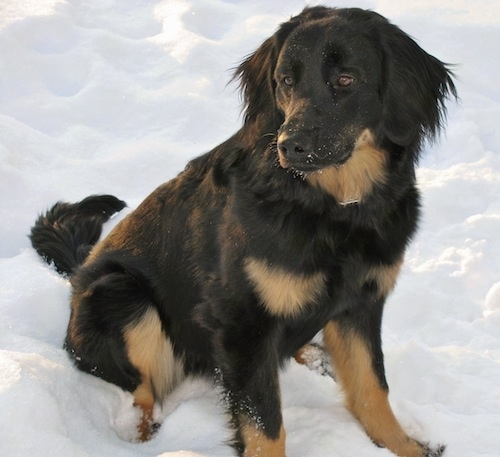
Lucy the Hovawart at 8 months old—"Lucy is affectionate, determined, intelligent, active and protective. Like most Hovawarts she enjoys playing in the snow, long walks and being close to the family. She is responsive to training and does best using a combination of positive reinforcement and firm (but patient) alpha techniques."
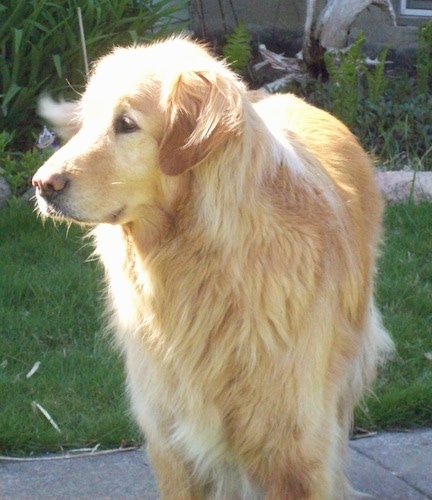
Remy the Hovawart at 11 years old—"Remy is now 15 years old. He has lost most of his hearing, is losing his sight (especially in in left eye), and has bad hips. Yet he still tries walking up and down the stairs. He used to bark at passing people a lot but now that he has lost his hearing, he barks 5 minutes later when he smells them. He also barks when someone leaves the house now. He gets along with dogs smaller than him and is timid around those larger. He gets along with cats and other small animals. He gets along with children of all ages and is very loyal."
Gandhi de LaVillaRoy, photo courtesy of LaVillaRoy's Hovawart
Fenja von der Koboldshütt, photo courtesy of LaVillaRoy's Hovawart
Lancelo, photo courtesy of LaVillaRoy's Hovawart
Phonix von der Rabenleithe the Hovawart puppy
Phonix von der Rabenleithe the Hovawart at about 4 years old